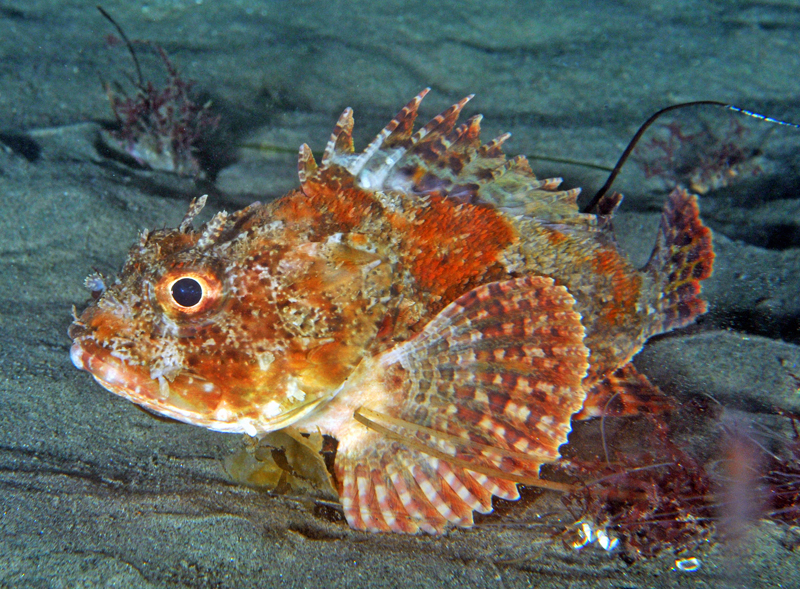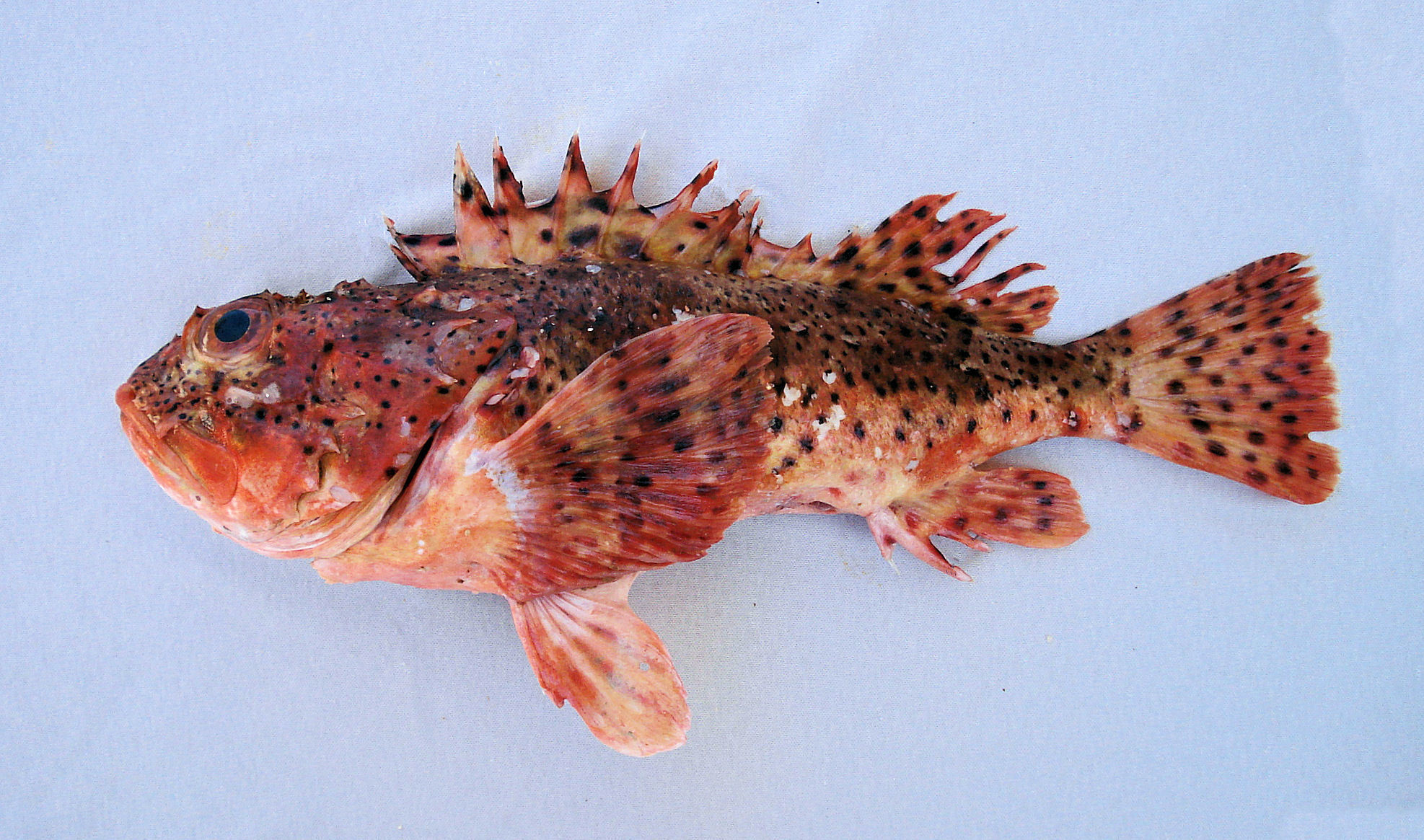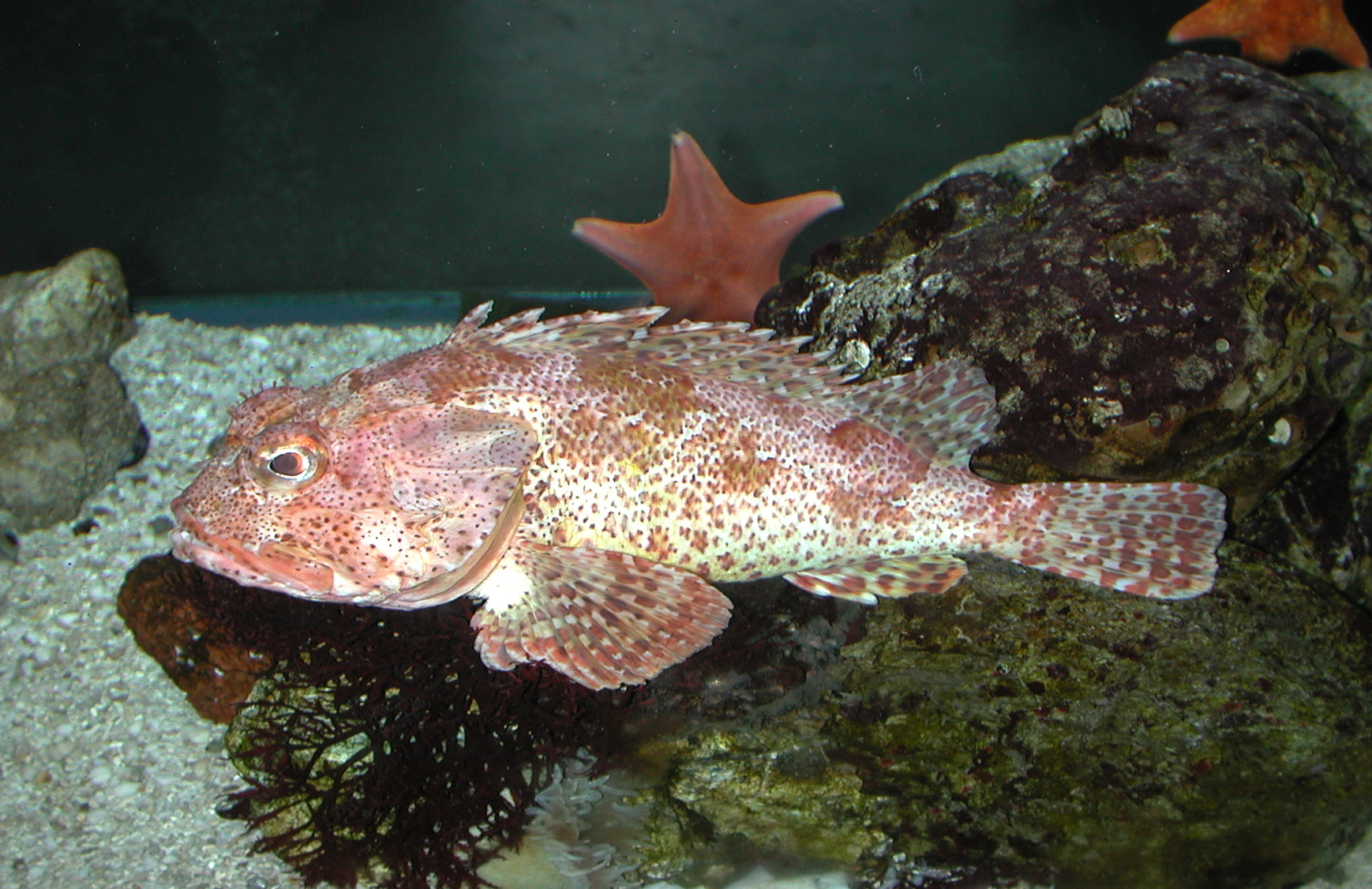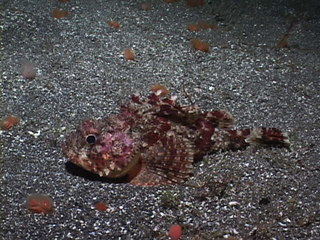
Scorpaena guttata
FAMILY
Scorpaenidae
TAXONOMY
Scorpaena guttata Girard, 1854, Monterey, California.
OTHER COMMON NAMES
English: Sculpin; French: Rascasse californienne; Spanish: Rascacio
californiano, escorpiуn californiano.
PHYSICAL CHARACTERISTICS
Reaches 16.5 in (42 cm) maximum length. Like most scorpaenids,
it is a well-camouflaged, spiny, massive fish. The
coloring varies widely, from a deep red through light brown.
Black, dark brown, and maroon spots cover the body and
fins.
DISTRIBUTION
Found from Santa Cruz, California, south to southern Baja
California. This species also is found in the Gulf of California.
HABITAT
These scorpionfishes are most abundant on hard bottoms, particularly
rocky reefs, caves, and man-made structures, such as
wrecked ships. Additionally, they can be found on muddy and
sandy bottoms.
BEHAVIOR
Although most scorpionfishes and their allies are venomous,
the California scorpionfish is the most venomous fish regularly
collected off the California coast.
FEEDING ECOLOGY AND DIET
The diet of these predators primarily consists of crabs, but
small fishes, octopi, and other crustaceans also are eaten.
REPRODUCTIVE BIOLOGY
Unlike most marine fishes, females produce eggs that are
imbedded within the gelatinous walls of pear-shaped structures
that float near the surface. After five days, the eggs hatch
within these structures. The larval fishes that emerge have an
integument that has an inflated appearance and is vesiculate.
The larvae remain in plankton until they reach the length of
0.6–0.8 in (15–20 mm), upon which they settle in their adult
HABITAT
.
CONSERVATION STATUS
Although the species represents a fairly important fishery, they
currently are not threatened as are some of their rockfish relatives.
SIGNIFICANCE TO HUMANS
Supports an important commercial and sport fishery in southern
California and Ensenada, Baja California. Most fishes are
taken in the spring and summer months, when commercial
fishermen target spawning aggregations using hook and line,
gill nets, and otter trawls.
Photo Gallery of - California scorpionfish





 Animalia Life
Animalia Life